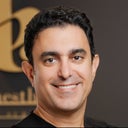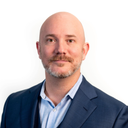I am 40 yrs old. My doctor suggested upper anchor blepharoplasty for my upper eyelids assuring me that this procedure will give me a refreshed and youthful look with little recovery time. Additionally, he will perfom fat injection to fill out the hollows under and around my eyes.I have doubts whether am a good candidate for anchor blep. since from the little info i have found on the internet it is usually performed in asian patients. Should i consult with an other surgeon for a different option?
Answers (7)
From board-certified doctors and trusted medical professionals
Dr. Kenneth D. Steinsapir, MD

Dr. Kenneth D. Steinsapir, MD
Oculoplastic Surgeon, Board Certified in Ophthalmology
Answer
Dr. Toby Mayer, MD

Dr. Toby Mayer, MD
Board Certified Facial Plastic Surgeon
Answer
Dr. A.J. Amadi, MD

Dr. A.J. Amadi, MD
Oculoplastic Surgeon, Board Certified in Ophthalmology
Answer
Dr. William Portuese, MD
Dr. William Portuese, MD
Board Certified Facial Plastic Surgeon
Answer
Dr. Chase Lay, MD

Dr. Chase Lay, MD
Board Certified Facial Plastic Surgeon
Answer
Dr. Richard Ellenbogen, MD (retired)
Dr. Richard Ellenbogen, MD (retired)
Board Certified Plastic Surgeon
Answer
More Eyelid Surgery Questions
See all Eyelid Surgery Q&AWE SEND PRETTY
EMAILS
What’s trending? Who’s turning heads? Which TikTok myths need busting? We’ve got you. No fluff, no gatekeeping—just real talk. Get our free, unfiltered newsletter.